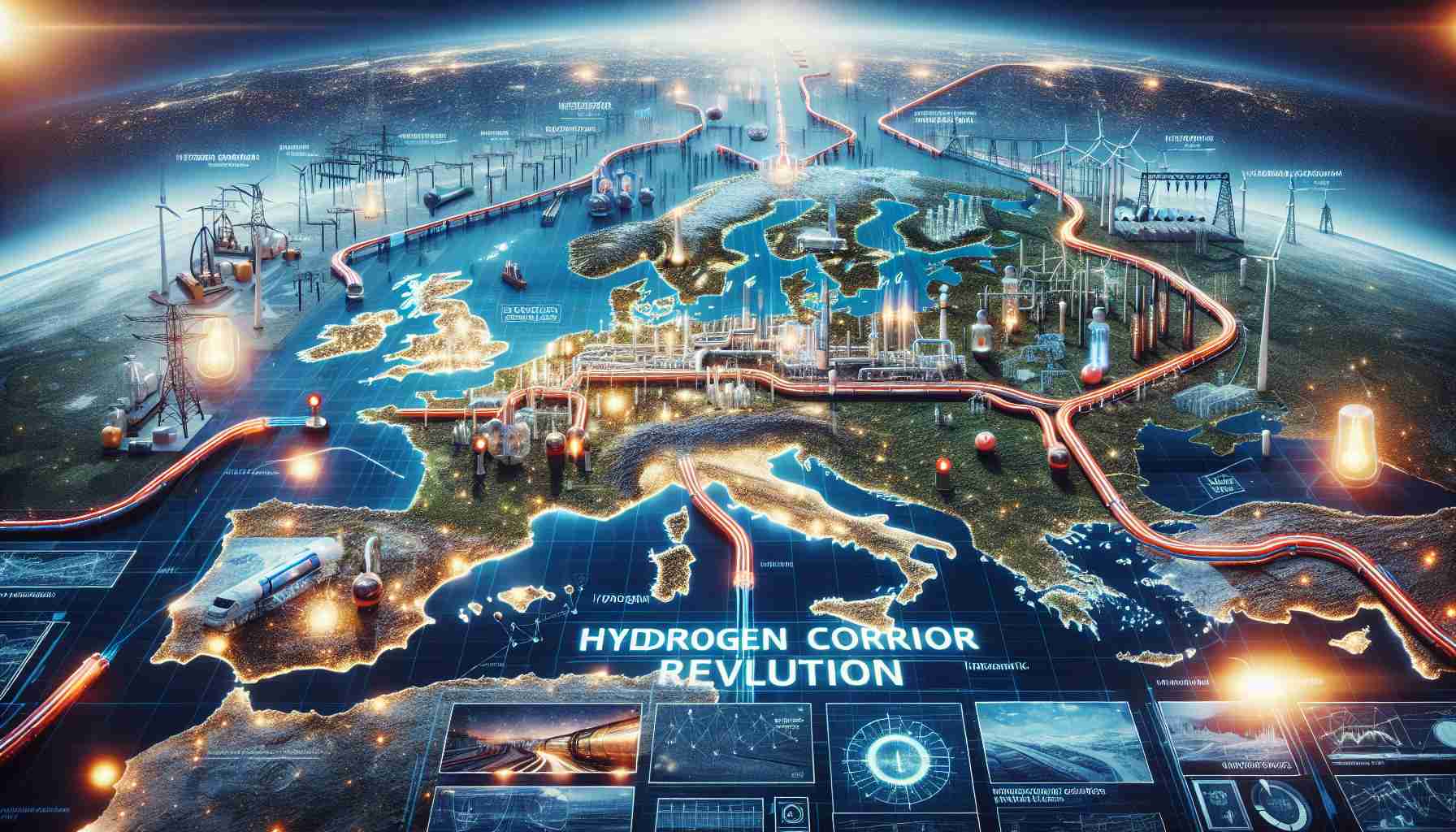
### A Bold Step Toward a Sustainable Energy Future
The gas transmission system operators (TSOs) from Finland, Estonia, Latvia, Lithuania, Poland, and Germany are embarking on significant feasibility studies for the Nordic-Baltic Hydrogen Corridor (NBHC). These comprehensive assessments, projected to last until mid-2026, will delve into various critical areas including pipeline routing, the planning of compressor stations, financial analyses, environmental safety permissions, and timelines for implementation.
Beyond the feasibility studies, the TSOs are set to undertake cross-border analyses to enhance the project’s structure. These efforts aim to facilitate project coordination and ensure technical and commercial consistency, alongside engaging with key stakeholders throughout the process, leading up to late 2026.
In a positive outlook regarding the project, the partners have expressed excitement over the collaboration’s potential to lower carbon emissions significantly while catalyzing economic growth and fostering a new hydrogen economy within Europe.
Before detailed studies begin, the TSOs will conduct a commercial principles study focused on establishing cross-border cost-sharing models to maintain financial sustainability across all operators involved.
By uniting these thorough evaluations, the NBHC is poised to become a safe, efficient transport route for renewable hydrogen, fitting seamlessly into the future European hydrogen network. This initiative is expected to contribute significantly to the EU’s decarbonization ambitions and bolster energy diversity across the region, with the corridor potentially slashing carbon emissions by up to 37 million tons annually by 2050.
The Nordic-Baltic Hydrogen Corridor: Pioneering the Future of Green Energy
### A Bold Step Toward a Sustainable Energy Future
The gas transmission system operators (TSOs) from Finland, Estonia, Latvia, Lithuania, Poland, and Germany are making commendable strides toward a sustainable energy future with the initiation of the Nordic-Baltic Hydrogen Corridor (NBHC). This ambitious project involves comprehensive feasibility studies set to last until mid-2026, analyzing various crucial factors such as pipeline routing, compressor station planning, financial models, environmental assessments, and implementation timelines.
### Key Features of the Nordic-Baltic Hydrogen Corridor
– **Technological Innovations**: The corridor emphasizes the integration of advanced technologies for hydrogen production, storage, and transportation, enhancing overall system efficiencies.
– **Environmental Impact**: Potential findings from preliminary assessments indicate that the corridor could facilitate a reduction in greenhouse gas emissions equivalent to 37 million tons annually by 2050, thus significantly contributing to the EU’s decarbonization targets.
– **Economic Benefits**: By establishing a hydrogen economy, the initiative is poised to spur job creation and investment opportunities across the Nordic-Baltic region, potentially leading to a green economic transformation.
### Use Cases for Renewable Hydrogen
– **Industry Decarbonization**: Renewable hydrogen is expected to play a pivotal role in mitigating carbon emissions in industries such as steel production and chemical manufacturing.
– **Transportation Solutions**: Hydrogen fuel cells can provide a clean alternative for heavy-duty transportation, reducing dependency on fossil fuels.
– **Energy Storage**: Hydrogen offers a promising solution for energy storage, addressing intermittency issues associated with renewable energy sources like wind and solar.
### Project Coordination and Funding
The TSOs are committed to ensuring project coherence by conducting cross-border analyses to engage with stakeholders actively. A commercial principles study will establish cross-border cost-sharing models that ensure financial sustainability across all parties involved.
### Challenges and Limitations
While the promise of the NBHC is significant, it also faces potential challenges such as:
– **Regulatory Hurdles**: Different regulatory frameworks in each participating country may complicate project execution.
– **Infrastructure Needs**: Significant investments in infrastructure will be necessary to bring the corridor to fruition.
– **Market Readiness**: The current market for hydrogen needs to mature to support widespread adoption and integration.
### Current Market Trends
The growing interest in hydrogen technologies aligns with global trends toward sustainability. Major energy companies are investing in hydrogen research and development, positioning themselves as key players in the emerging hydrogen economy.
### Conclusion
With its innovative approach to energy transmission and significant potential for environmental impact, the Nordic-Baltic Hydrogen Corridor stands at the forefront of Europe’s shift towards a greener future. As the feasibility studies progress, the collaboration among TSOs represents a pivotal step in realizing the EU’s ambitious energy goals.
For more insights on sustainable energy initiatives, visit EURACTIV.
